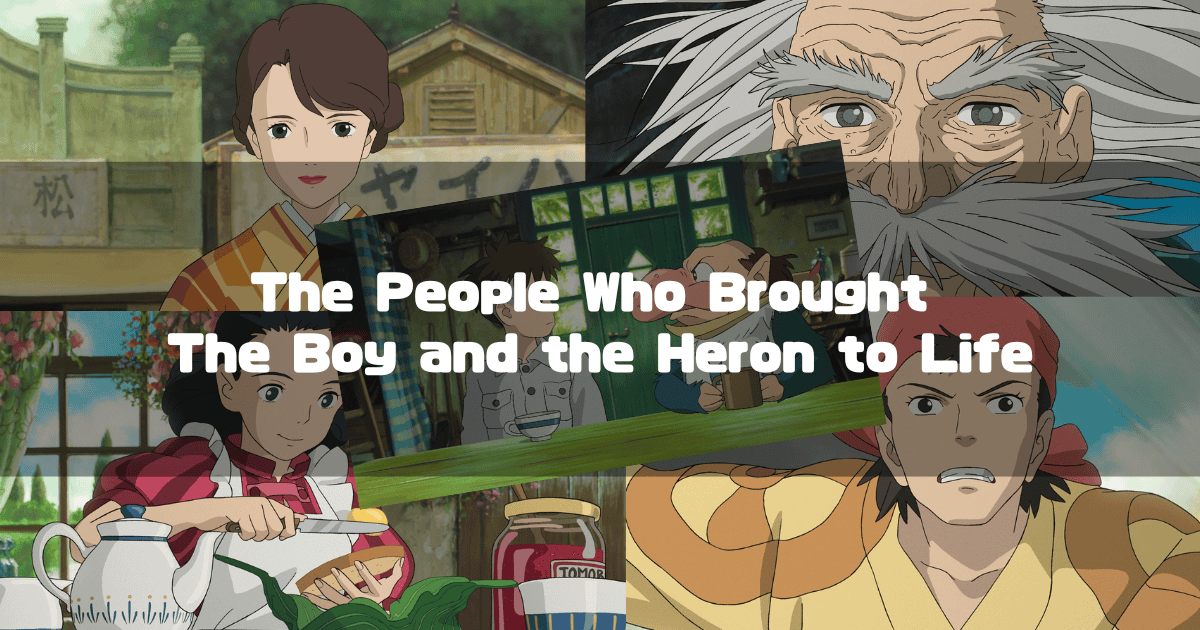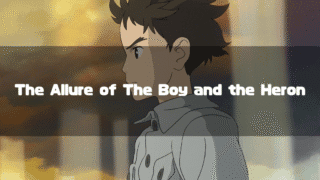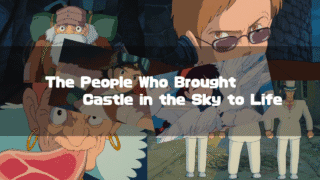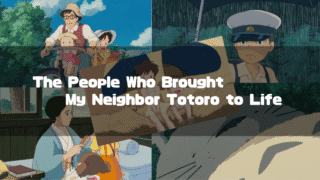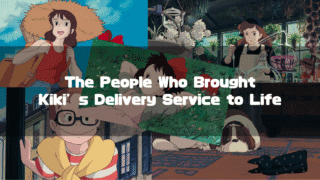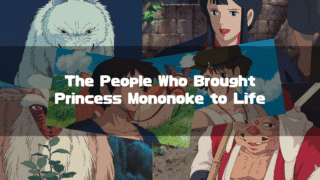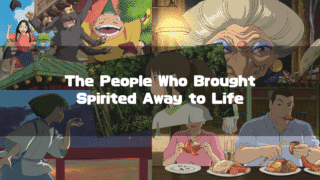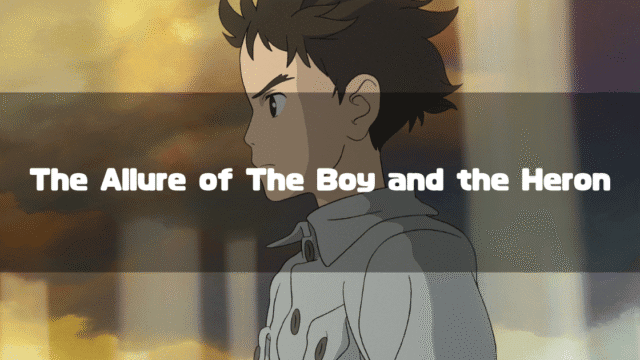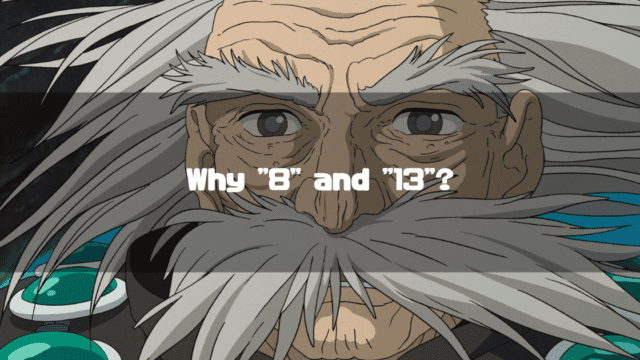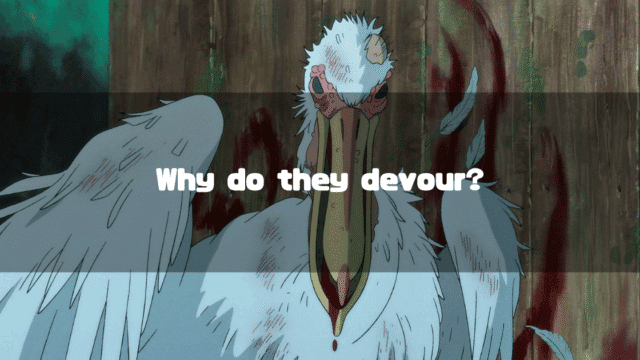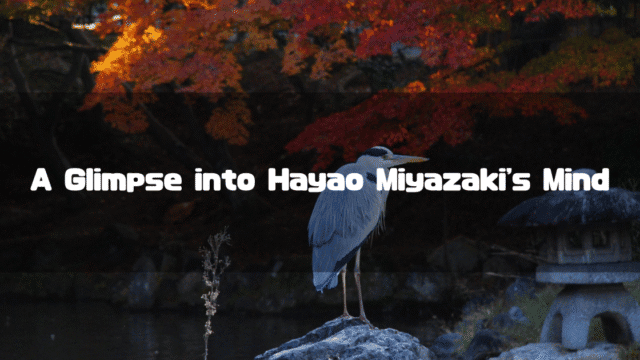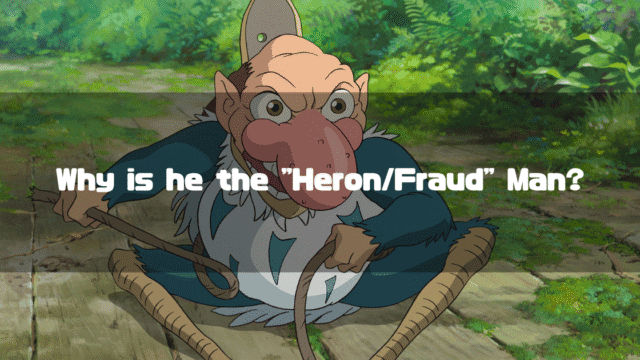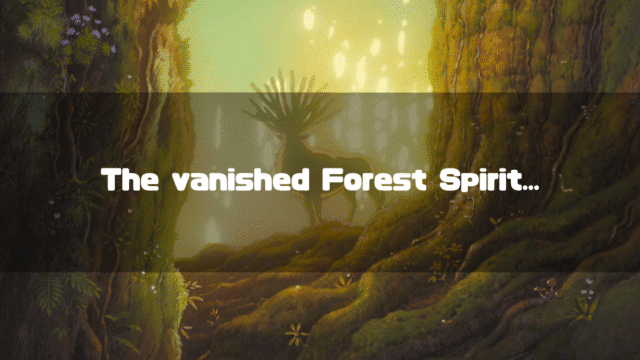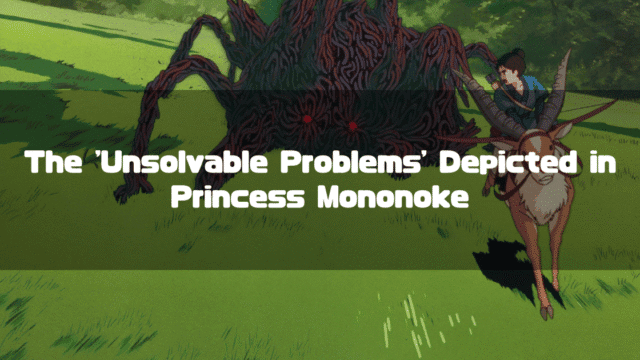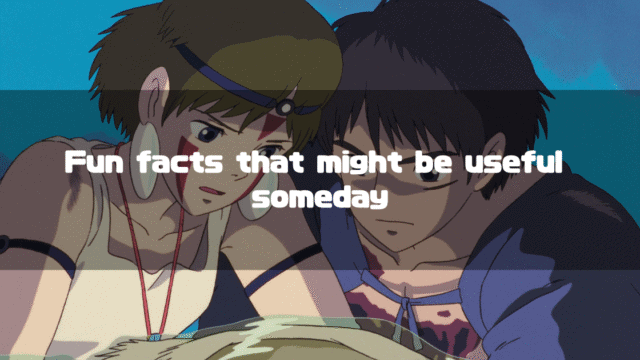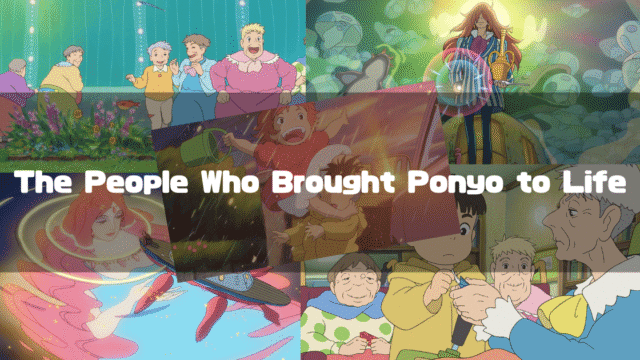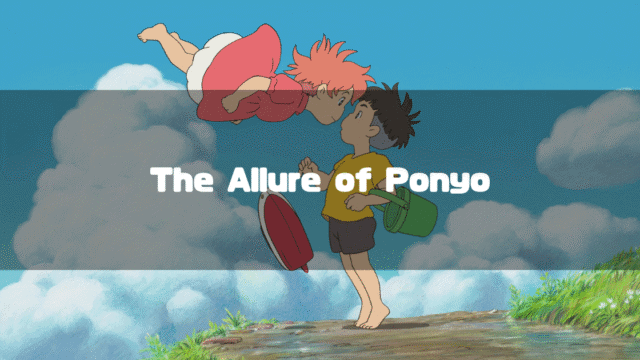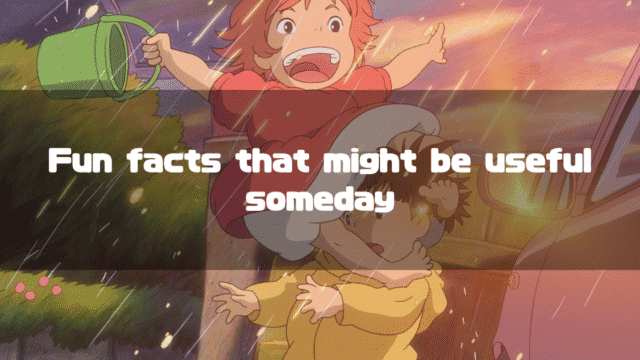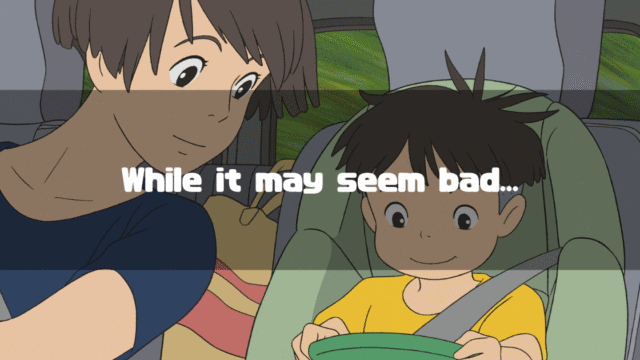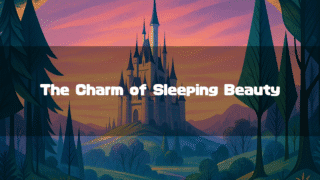The Boy and the Heron(Studio Ghibli Official Website) is a feature-length animated film directed by Hayao Miyazaki, released on July 14, 2023.
Under a basic policy of no advertising whatsoever, the film was released with almost no information available except for a poster image and the title The Boy and the Heron. The names and even the visuals of the characters were completely unknown until the premiere.
The same was true for the voice cast. There were only slight hints on social media that Christian Bale might be voicing Mahito’s father, Shoichi, and Robert Pattinson voicing the Gray Heron. Until watching the film, it was a complete mystery who was voicing which character. In the case of Robert Pattinson, his performance was so transformative that it was hard to recognize him even after watching the movie (though ultimately, I think every single performance was magnificent).
In this article, we’ll take a look back at the characters and voice actors of The Boy and the Heron, and reflect on their charms and their roles in the story.
Please be aware that the following text contains spoilers.
*This article is an English translation of the original Japanese article, 【君たちはどう生きるか】登場人物&声優情報一覧とキャラクター考察そして人物相関図.
Let an AI walk you through the highlights of this post in a simple, conversational style.
- The Boy and the Heron (2023) Main Characters & Voice Actors List
- The Boy and the Heron (2023) Character Map
- The Boy and the Heron (2023) Character Profiles, Voice Actors, and Analysis
- Mahito|Voiced by: Luca Padovan
- The Gray Heron / Heron Man|Voiced by: Robert Pattinson
- Kiriko|Voiced by: Florence Pugh
- Himi|Voiced by: Karen Fukuhara
- Natsuko|Voiced by: Gemma Chan
- Shoichi|Voiced by: Christian Bale
- Warawara|Voiced: (Uncredited)
- The Parakeet King|Voiced by: Dave Bautista
- Noble Pelican|Voiced by: Willem Dafoe
- Granduncle|Voiced by: Mark Hamill
- Other Characters and Voice Actors
- The Boy and the Heron (2023) Original Japanese Voice Cast List
The Boy and the Heron (2023) Main Characters & Voice Actors List
| Name | Age | Voice Actor |
|---|---|---|
 Mahito | 11 | Luca Padovan |
 The Gray Heron / Heron Man | ? | Robert Pattinson |
 Kiriko | ? | Florence Pugh |
 Himi | ? | Karen Fukuhara |
 Natsuko | ? | Gemma Chan |
 Shoichi | 37 | Christian Bale |
 The Parakeet King | ? | Dave Bautista |
 Granduncle | ? | Mark Hamill |
The Boy and the Heron (2023) Character Map
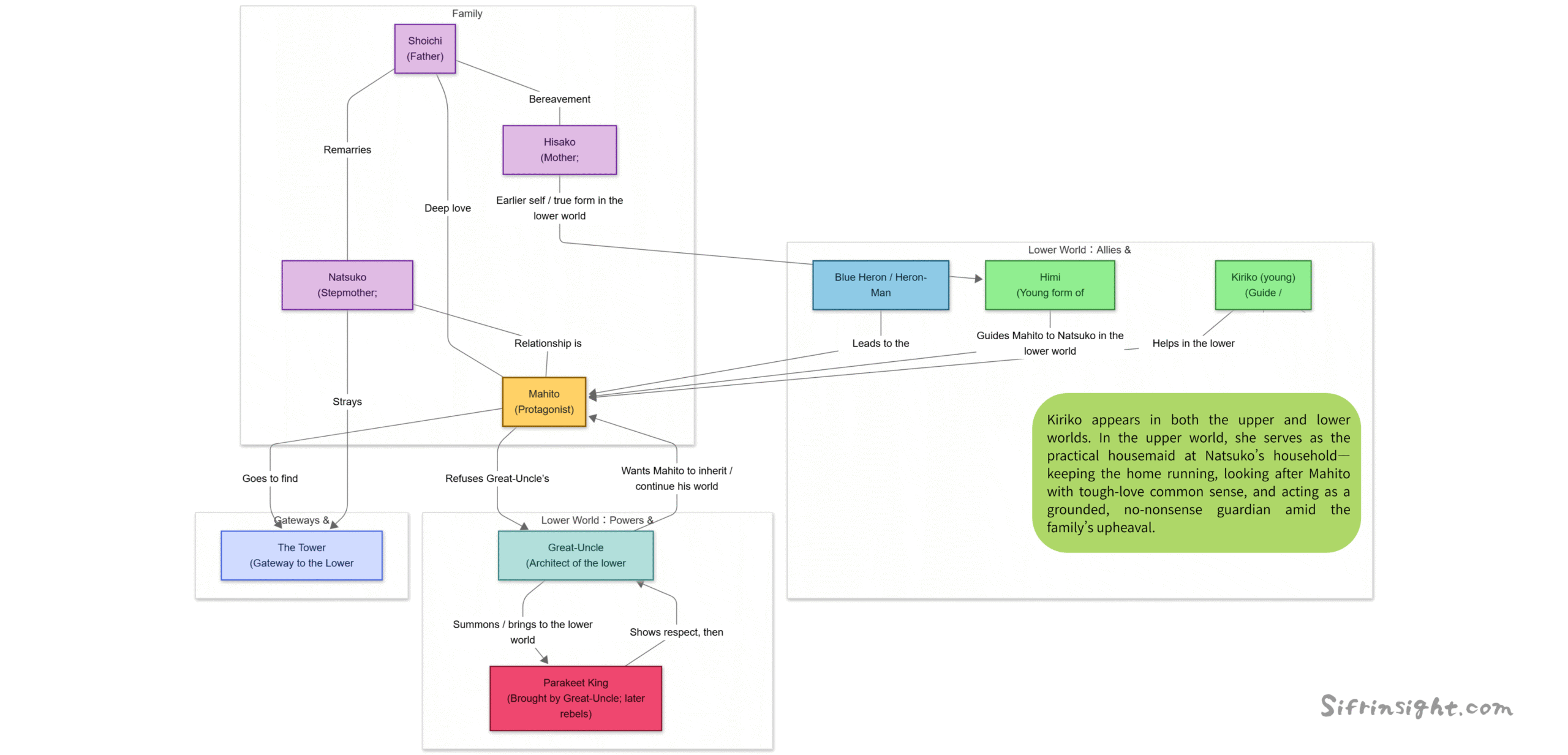
Mahito’s late mother, Hisako, left him a copy of Genzaburō Yoshino’s How Do You Live?, and by reading it he gradually learns to cope with her death.
Hisako and Natsuko’s great-uncle had been enthralled by the power of a meteorite that once fell to Earth, and vanished inside a tower he built around it. Mahito and Natsuko eventually stray into the “lower world” that this great-uncle created.
Hisako herself disappeared inside the tower as a child, and Himi—who appears in the story—is Hisako from that time (as is Kiriko).
The Boy and the Heron (2023) Character Profiles, Voice Actors, and Analysis
Mahito|Voiced by: Luca Padovan
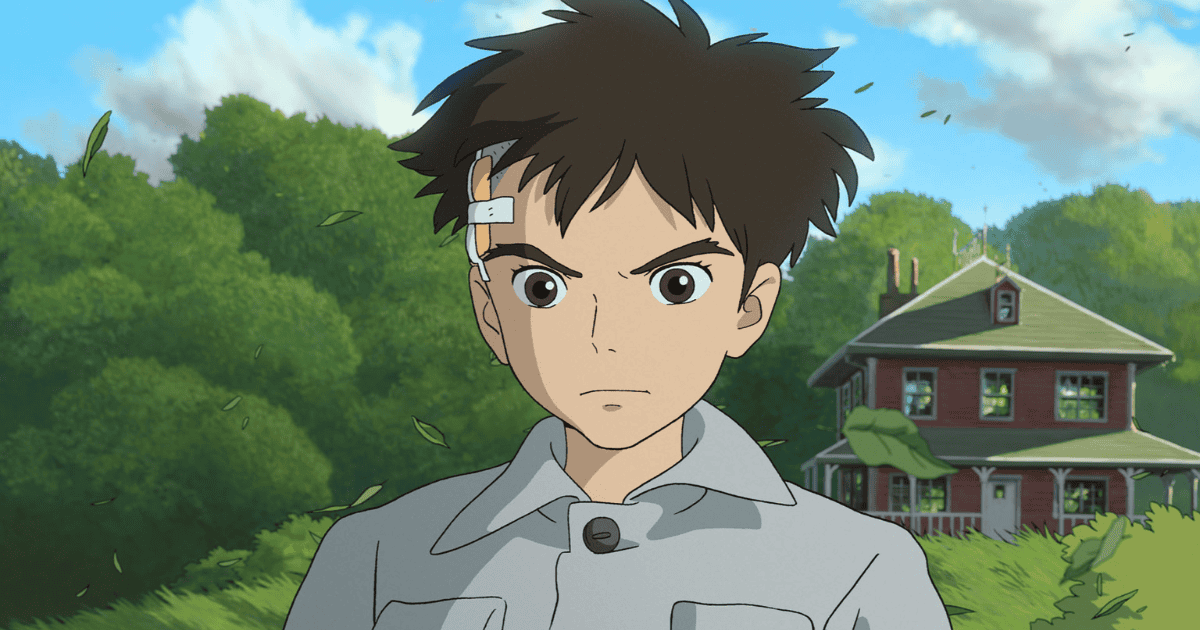
Mahito’s Profile
The story’s protagonist, 11 years old (6th grade). His full name is Mahito Maki. The story begins with him experiencing the loss of his hospitalized mother in a hospital fire.
As the war intensifies, he moves to his mother’s hometown, only to find that her younger sister, Natsuko, is already pregnant with his father Shoichi’s child.
Mahito’s Sense of “Alienation” and the Mysterious Tower
Even after moving to his mother’s hometown, his father Shoichi continued to shower him with affection (though perhaps a bit one-sidedly; we’ll discuss Shoichi’s attitude later). However, it’s likely that Mahito felt a strong sense of “alienation” living at the “Aosagi Yashiki” (Blue Heron Mansion), where his mother grew up.
His father had started a new life with Natsuko, who was carrying his child, creating a three-against-one situation. Mahito probably felt that the Blue Heron Mansion was not a place where he belonged.
It is during this time that a gray heron living in the mansion’s garden seems to lure him, sparking his interest in a mysterious tower. I believe Mahito was searching for “somewhere other than here.”
He did not want to be at the Blue Heron Mansion.
The Heron’s Invitation and Mahito’s Final Resistance
Given Mahito’s desire to leave the mansion, the heron’s words, “Your mother is alive,” should have been the ultimate “invitation.” If this weren’t a Miyazaki film, I imagine Mahito would have headed to the granduncle’s tower on that invitation alone.
However, Mahito stubbornly resists the heron’s words, even going so far as to build a bow and arrow to drive the bird away.
In other words, while Mahito was drawn to the words “Your mother is alive,” by antagonizing the heron who denied the sad reality he was trying to accept, he was essentially fighting against the “truth he had to accept.”
The reason The Boy and the Heron takes a while to delve into its fantasy elements seems to lie in this internal conflict within Mahito.
The Pivotal Role of How Do You Live?
Just before finally stepping into the fantasy world, Mahito reads the book How Do You Live? It was a “last will and testament” from his mother.
By reading the book his mother left for him, Mahito finally comes to terms with her death and finds the resolve to take the next step.
This means that after reading How Do You Live?, Mahito would not have gone to that tower, no matter how much the heron tempted him.
The reason he marched into the mysterious tower was because Natsuko had gone there. In other words, it was to save his new mother.
I think it’s significant that Mahito’s decisive action was not prompted by the Gray Heron’s words.
Mahito’s Malice and the Story’s Conclusion
After journeying through a fantasy world typical of Director Miyazaki, Mahito ultimately rejects that world and refuses to succeed his granduncle. One of his “excuses” is that his own hands are already stained with malice.
He claims the scar on his head is a symbol of this malice. It was a rather difficult expression to understand, but considering the context, it could mean:
- He felt that “not wanting to go to school” was a form of defeat, so he tried to use his father by inflicting a serious injury on himself.
- He wanted to see how Natsuko would treat him after his serious injury, thereby testing her.
In any case, it means that despite his “criticism of the situation,” he used his position as a child to conceal it. Therefore, it is likely “malice.”
However, he accepts the malice within himself and chooses the messy, not-always-within-his-control original world over a selfish world he could create by succeeding his granduncle’s stones.
Ultimately, The Boy and the Heron could be simply summarized as a story of a boy earnestly trying to accept his current reality.
Mahito as Hayao Miyazaki
So far, we have looked at Mahito on the surface level of the story. However, considering the fact that his father, Shoichi, is manufacturing fighter planes—a historical reality—we cannot help but think of Mahito as an avatar for Hayao Miyazaki himself. Director Miyazaki’s father, Katsuji Miyazaki, was the director of Miyazaki Airplane(Wikipedia).
However… in the film The Boy and the Heron, it’s not just Mahito who reflects Hayao Miyazaki, nor is it only Hayao Miyazaki who is projected onto Mahito. I personally believe this multi-layered structure is what makes The Boy and the Heron so fascinating.
I discuss this in more detail in the following article:
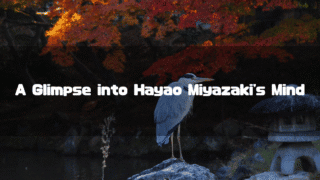
What are your thoughts?
The Gray Heron / Heron Man|Voiced by: Robert Pattinson
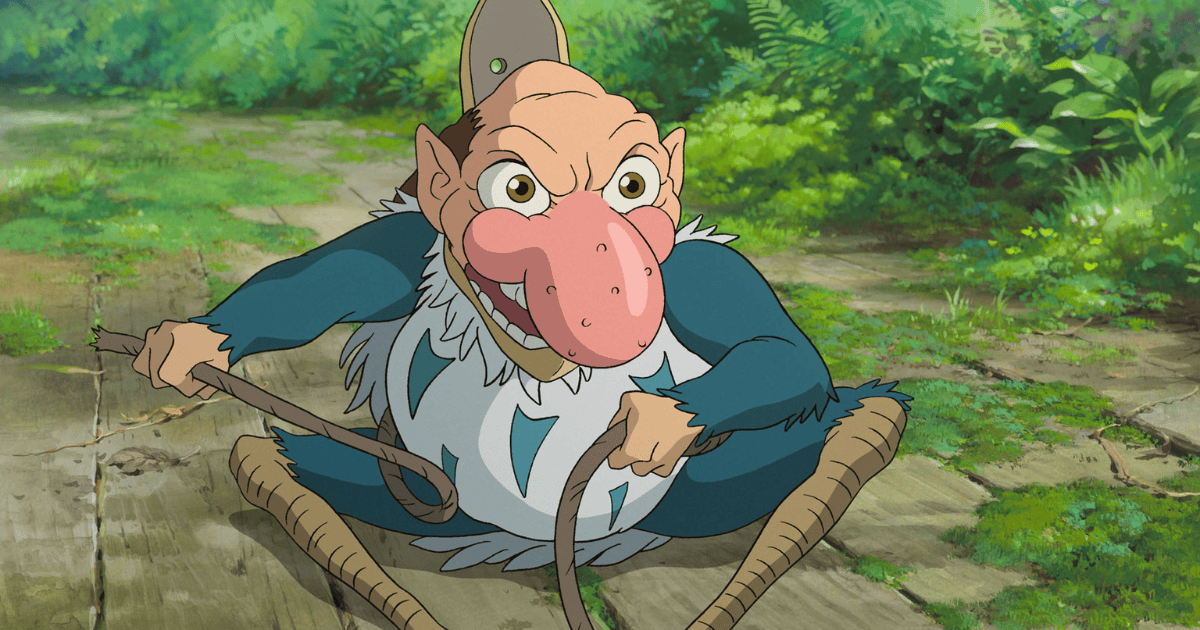
The Gray Heron’s Profile
A gray heron that resides in the garden of the “Blue Heron Mansion” and cunningly lures Mahito to the mysterious tower built by his granduncle. Despite his eerie aura, his true form (?) was that of a big-nosed old man.
Initially, he confronted Mahito with clear malice, but this gradually transformed into bickering, and they eventually became a remarkable duo.
He also served as a brilliant comedic relief in what was a rather serious story.
The Heron Man as Toshio Suzuki
As mentioned in Mahito’s section, Mahito is an avatar for Hayao Miyazaki. So, who does the Gray Heron, who misleads Mahito yet remains his companion to the very end, represent?
Of course, there can be only one answer: Toshio Suzuki.
Suzuki has been associated with Hayao Miyazaki and Isao Takahata since before the founding of Studio Ghibli, and has been making animation with them ever since.
Toshio Suzuki himself has spoken of intense clashes, but the fact remains that they have continued to create animation together with a density that we can hardly imagine.
If the mysterious world created by the granduncle in The Boy and the Heron was Hayao Miyazaki’s “world of creation,” then this story could be seen as a reaffirmation of the path Hayao Miyazaki and Toshio Suzuki have walked together.
But why did Toshio Suzuki appear in the story as the Gray Heron / Heron Man?
It could be for no particular reason, just because Miyazaki wanted it that way. However, looking back at Toshio Suzuki’s work, this “Heron Man” (or ‘Sagi-otoko’ in Japanese, which can also mean ‘con man’) setting has a strange sense of appropriateness. I’ve summarized my thoughts on this in the following article:
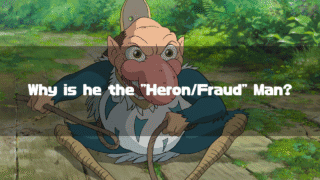
Please enjoy his masterful skill.
Kiriko|Voiced by: Florence Pugh
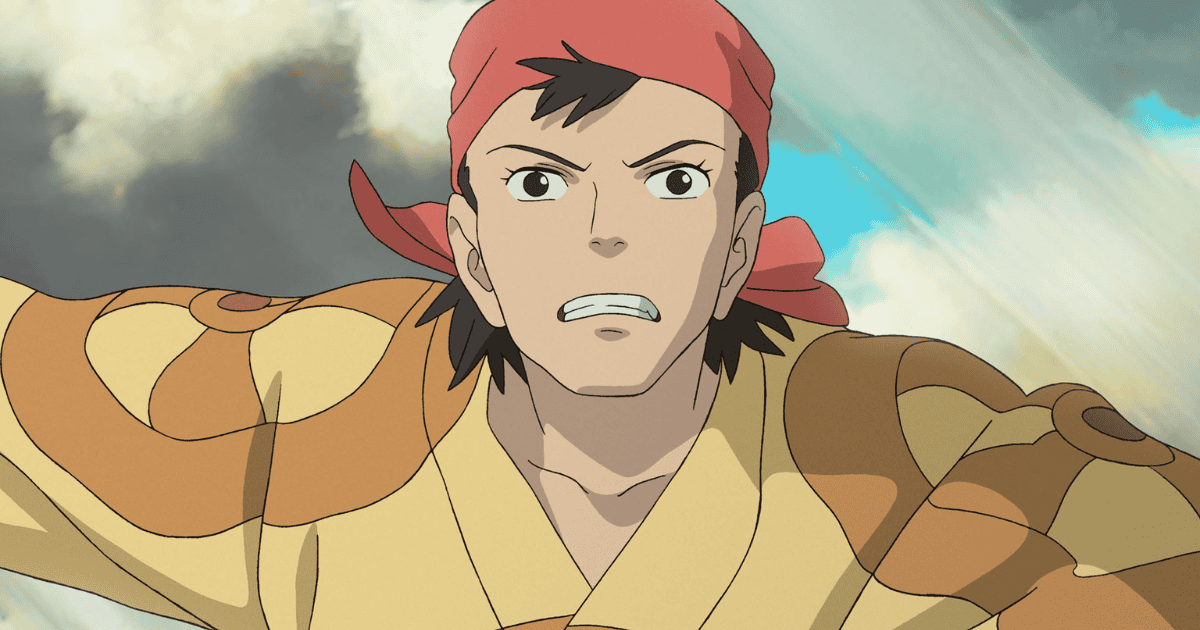
Kiriko’s Profile
She first appears as one of the seven old maids at the “Blue Heron Mansion.” She follows Mahito to the mysterious tower as he searches for Natsuko, and ends up in the world created by the granduncle. However, in that world, Kiriko reappears before Mahito in a youthful form.
As a result, she becomes a character who makes the concept of “time and space” in this work fundamentally difficult to understand.
The first question is, where did the young Kiriko come from? One possibility is that the Kiriko who came with Mahito transformed into her younger self, but that doesn’t quite add up. Kiriko is too familiar with that world and possesses mysterious magical powers. When did she acquire those powers?
It’s more likely that the Kiriko in that world is not the same one who accompanied Mahito. So, where did she come from?
A possible clue is the fact that at the end of the story, she is shown returning through the same door as Himi.
This suggests that Kiriko wandered into the world of the tower with Himi (Hisako) when Himi was spirited away. I believe this is the only explanation. In the present, she wandered into that world with Mahito, but in the past, she had accompanied Himi into that same world.
Furthermore, since Himi returned to the real world after a year had passed, both Himi and Kiriko must have spent a considerable amount of time in that world. During that time, she may have been granted powers by the granduncle or otherwise acquired magical abilities.
However, there’s still a slight contradiction. Even if Kiriko was spirited away with Himi, she seems too old by the time she appears before Mahito, considering the time it would take for Himi to return to the real world, grow up, and marry Shoichi. It’s highly unlikely that Himi married Shoichi 30 years after returning. Kiriko is definitely too old.
To maintain consistency within the story’s world, the only explanation is that the granduncle rejuvenated the already aged Kiriko to an active age. Perhaps Kiriko aged quite a bit after going through the door with Himi.
Could Kiriko be Michiyo Yasuda?
The more you think about her, the more confusing Kiriko’s situation becomes. However, considering why such a complicated character was included in the work, a certain possibility emerges. Perhaps Kiriko represents Michiyo Yasuda.
Yasuda was a close colleague of Director Miyazaki from his Toei Animation days, and at Studio Ghibli, she was a central figure who oversaw “finishing” and “color design,” creating films alongside the director.
“Finishing” might be an unfamiliar term, but in cel animation, it primarily involves painting the cels. While “painting cels” might sound simple, it’s an extremely difficult job that requires painting on the back of the cel to achieve a perfect look from the front. I’ve only seen it in videos, but it’s an astonishing craft. Today, coloring is likely done on computers, but the workload is still immense.
“Color design” is also an incredibly demanding job. Every color animation we’ve ever seen has a color designer. They are the ones who decide “what color everything is.” Again, it sounds simple in words, but the “correct color” changes depending on the artistic intent of the work. The job of “color design” is to specify these colors. Thanks to them, we can watch “natural-looking” color animation.
Michiyo Yasuda passed away in October 2016. According to the film’s pamphlet, Director Miyazaki wrote the project proposal in July 2016. Yasuda was still alive then (though her health condition is unknown). The director would have learned of his “comrade-in-arms'” passing after writing the proposal.
It’s uncertain whether this was the intention from the beginning, or perhaps the film’s “time and space” became so convoluted because he learned of her death later.
However, the fact that Kiriko was the first to help Mahito in “that world,” followed by the Heron Man, seems to represent that Yasuda was his senior at Toei Animation, and Toshio Suzuki was the partner he met later. Of course, meeting the Heron Man didn’t mean Kiriko was no longer a partner. That’s why Mahito kept the Kiriko doll she gave him. Michiyo Yasuda remained Director Miyazaki’s comrade-in-arms.
According to online sources, Hayao Miyazaki joined Toei Animation in 1963 (after graduating from university), while Michiyo Yasuda joined in 1958 (after graduating from high school). Miyazaki would meet Toshio Suzuki much, much later.
However, I’m aware that the evidence for the “Kiriko is Yasuda” theory is thin. But this perspective helps explain why, at the end of the story, “Kiriko goes through the same door as Himi,” and “Mahito and the Heron Man go through the same door.”
Himi (Miyazaki’s mother) and Kiriko (Michiyo Yasuda) have already passed away, while Mahito (Hayao Miyazaki) and the Heron Man (Toshio Suzuki) are still alive. That’s why they returned through different doors.
The “time and space” consistency isn’t perfect, but shouldn’t we just decide that Kiriko is Michiyo Yasuda?
Himi|Voiced by: Karen Fukuhara
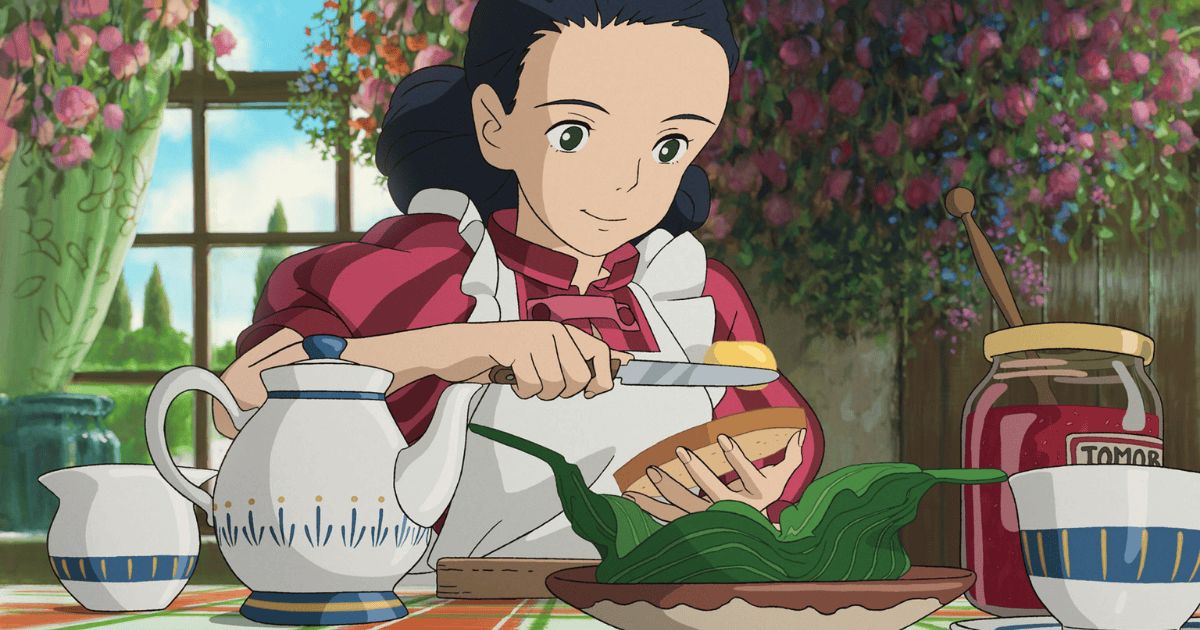
Himi’s Profile
A mysterious girl Mahito meets in the “Lower World” he wanders into. Her true identity is Mahito’s mother, Hisako, who wandered into the granduncle’s world at a young age, just like Mahito.
Himi possesses the mysterious power (magic) to control fire, and she uses this power to help Mahito on his quest to find Natsuko.
In the end, she returns to her original world to become Mahito’s mother.
Himi as Hayao Miyazaki’s Mother
Considering that the protagonist Mahito’s father, Shoichi, is the president of an aircraft manufacturing company (and the blatant way this was depicted), it’s almost certain that Mahito is an avatar for Hayao Miyazaki. Director Miyazaki’s father, Katsuji, was the manager of Miyazaki Airplane(Wikipedia).
If so, then Mahito’s mother, Hisako (Himi), would be an avatar for Director Miyazaki’s own mother.
I believe the most blatant depiction of his “mother” was in Ponyo on the Cliff by the Sea, and this time too, he seems to have depicted his “mother” quite openly. However, I think it was done in a slightly different manner than before. I’ve summarized my thoughts on this in the following article:

How was the expression of the “mother” different in The Boy and the Heron compared to his previous works? And why does Himi control fire? I think pondering these questions is quite interesting.
Natsuko|Voiced by: Gemma Chan
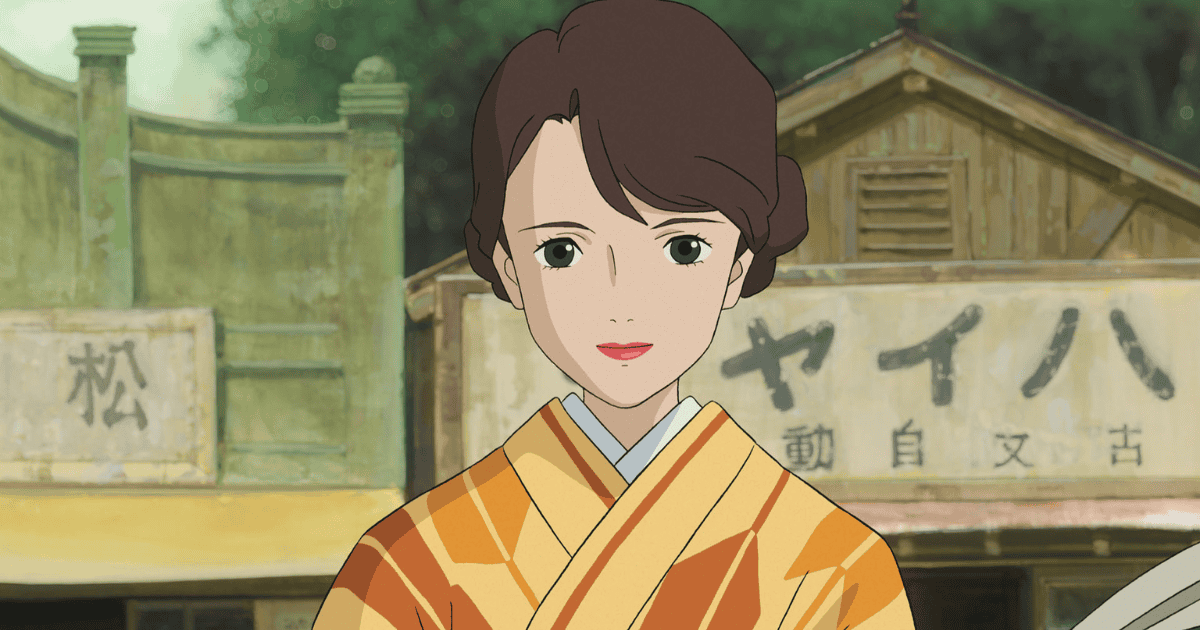
Natsuko’s Profile
Protagonist Mahito’s stepmother. Although she is his stepmother, she is also his biological mother’s younger sister. Mahito’s mother, Hisako, died in a hospital fire while hospitalized.
Before the war, this sort of thing was quite common. It was not unusual for someone who lost their husband in the war to marry his brother.
However, just because it was a social norm doesn’t mean it was easy for the child involved. And the protagonist, Mahito, is faced with exactly this problem.
And because Mahito is a child, we tend to empathize or feel sympathy for him. But for Natsuko, accepting Mahito is also a major undertaking.
Natsuko is an adult, but to create a proper family, she absolutely needs Mahito’s cooperation. But Mahito is a child. And he lost his biological mother without having had enough time with her.
In such circumstances, Natsuko tries her best to accept Mahito and become his “mother,” but… given her pregnancy, it’s not surprising if she becomes preoccupied with her own needs. Her husband, Shoichi, comes home late, and she is left to care for Mahito while pregnant. And he is not even her own child.
It wouldn’t be strange for Natsuko to wish for “somewhere she can give birth to her child in peace.” It is likely this feeling that led her to enter the tower. Natsuko wished for “somewhere other than here.”
And it was Mahito who embarked on a journey to bring her back.
Mahito himself was dissatisfied with his situation, but by reading How Do You Live? left by his mother, he came to terms with the “mother” figure within him and decided to accept Natsuko as his mother. However, Natsuko is unaware of this, and at that very moment, she departs for the “other world.”
In this situation, I believe it was Mahito’s single word, “Mother,” that fundamentally changed Natsuko’s feelings, and in the end, she responded to that word.
It’s not just the children who are hurting; it’s not just the children who are struggling.
I think Natsuko is the one who bears the full weight of this “parental struggle” in The Boy and the Heron.
But in the end, Natsuko chooses the “present.” The Boy and the Heron is a film that affirms the present. That’s what I believe.
Shoichi|Voiced by: Christian Bale
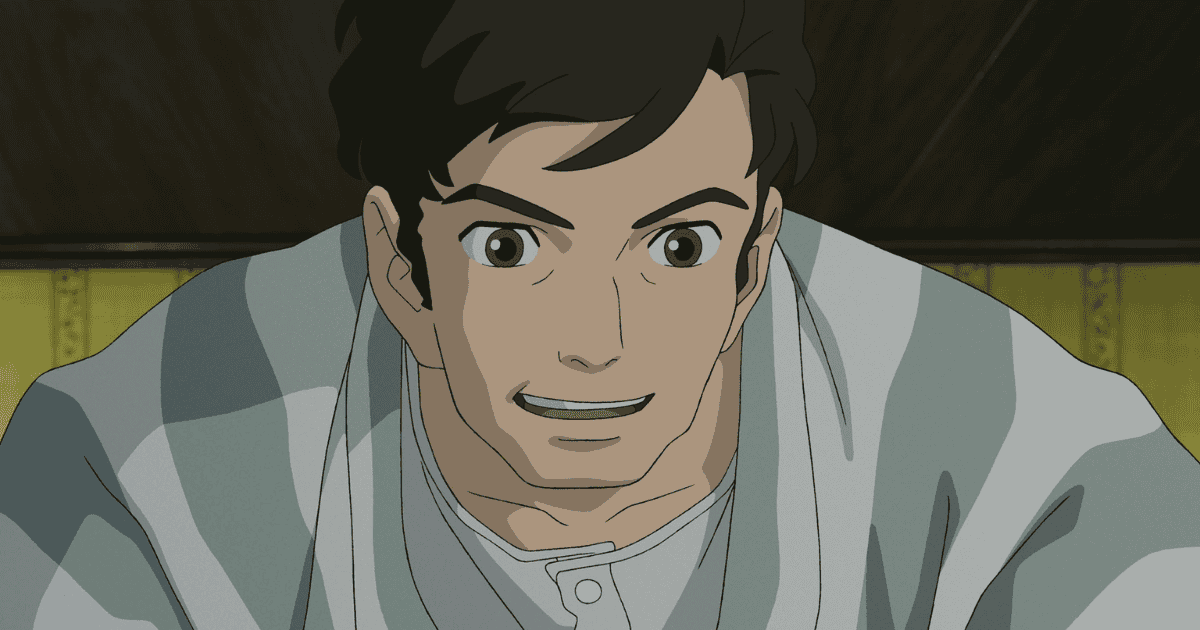
Shoichi’s Profile
The protagonist Mahito’s father, 37 years old. He runs an aircraft manufacturing company.
He seems to shower his son Mahito with overflowing affection… but it feels a bit off-target.
Like the old man in The Tale of the Princess Kaguya, his actions often made me feel anxious.
But our feelings changed completely when we saw Shoichi wielding a sword to protect Mahito. What a great dad, we thought.
Shoichi as Miyazaki’s Father, and as Miyazaki Himself
As mentioned earlier, Shoichi runs an aircraft manufacturing company, and Director Miyazaki’s father, Katsuji, was also the (de facto) manager of Miyazaki Airplane(Wikipedia).
Considering this, there’s no doubt that Director Miyazaki’s father is projected onto the character of Shoichi.
On the other hand, I also feel that Shoichi is an avatar for Hayao Miyazaki himself. I discuss this in more detail in the following article:
I personally believe that a characteristic of this film is how various people are projected onto a single character.
Warawara|Voiced: (Uncredited)

The Warawara’s Profile
These are adorable beings that appear in the “Lower World” Mahito wanders into. They are the forms of humans before they are born into this world.
From Teto in Nausicaä of the Valley of the Wind, to the tiny Mudge in Castle in the Sky, and the Soot Sprites in My Neighbor Totoro, Miyazaki’s films often feature characters that are aggressively heartwarming, and this time, I was completely won over again.
However, since the “Lower World” is ultimately a world created by the granduncle, the idea that “the Warawara are the pre-incarnate forms of humans” must be considered a fiction, an imaginary fact, even within the world of the movie.
Furthermore, since The Boy and the Heron is also a work of fiction, the existence of the Warawara and their nature would be a “fiction within a fiction” (I believe the Parakeet King and the pelicans fall into the same category).
This kind of strange structure is another characteristic of The Boy and the Heron. Fully grasping this film is an extremely difficult task, I think.
The Parakeet King|Voiced by: Dave Bautista
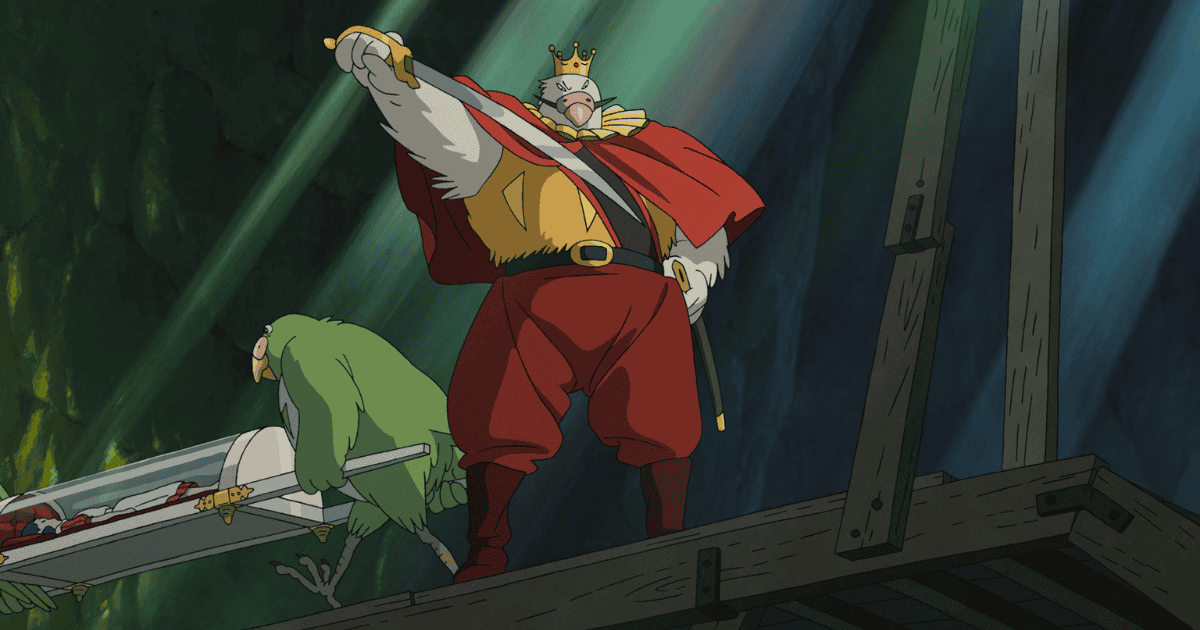
The Parakeet King’s Profile
The king of the numerous anthropomorphized parakeets in the “Lower World.” Originally brought into that world by the granduncle, he demanded that the granduncle hand over control of the world.
What the Parakeet King and the parakeets signify is a bit difficult to grasp, but we can speculate. The following testimony by Toshio Suzuki in SWITCH Vol.41 No.9 Special Feature: The Adventure of Ghibli (SWITCH Vol.41 No.9 特集 ジブリをめぐる冒険, in Japanese) might be a hint:
Miya-san says, “The Parakeet King is me.” And he also said, “The other self I wanted to be is Mahito.”
(Original Text in Japanese)
宮さんは「インコ大王は自分だ」と言う。そして「なりたかったもう一人の自分が眞人だ」と言っていました。
Why would that Parakeet King be Hayao Miyazaki? I will discuss this together in the section on the “Noble Pelican,” and have written about it in more detail in the following article:
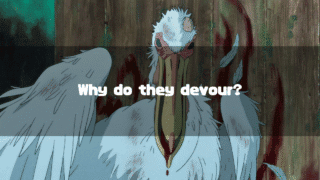
How did you see the Parakeet King and his subjects?
Noble Pelican|Voiced by: Willem Dafoe
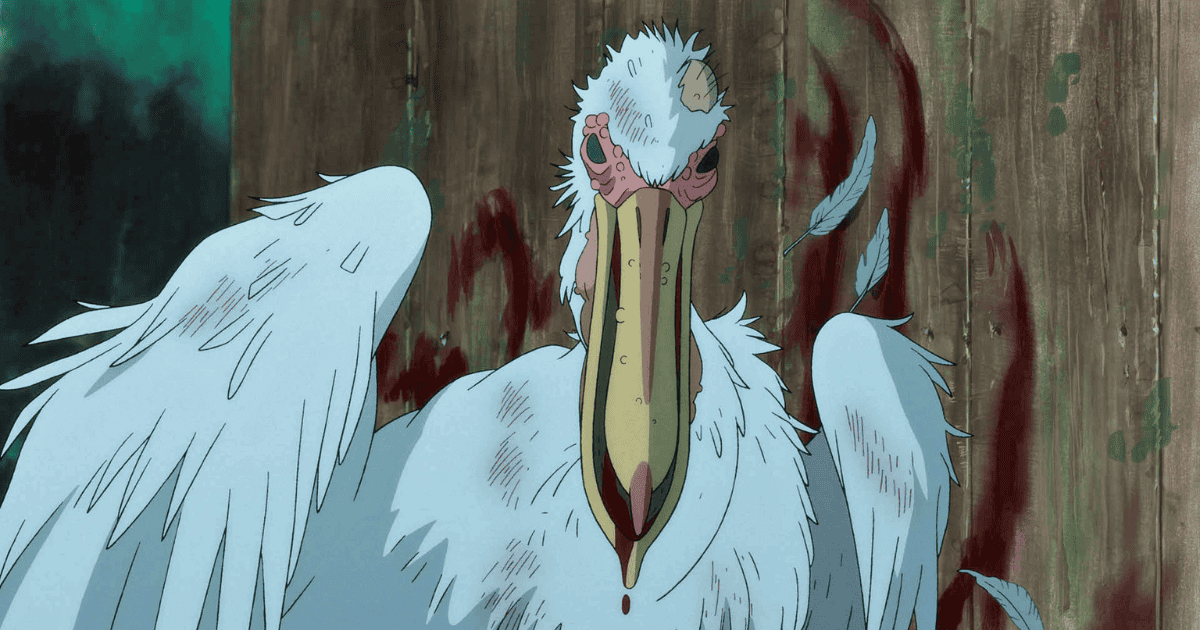
Noble Pelican’s Profile
A pelican that appears in the “Lower World” as a predator of the Warawara, who are trying to be reincarnated as humans. Mortally wounded by Himi’s power, he is ultimately buried by Mahito.
Pelicans and Parakeets as Symbols of Miyazaki Devouring Talent
Both the parakeets and the pelicans seem to have been brought into that mysterious world by the granduncle. The words spoken by the old pelican as his life was ending were filled with immense suffering.
To understand what this pelican symbolized, it’s important to note that the pelicans were predators of the Warawara.
If we consider the “Lower World” to be Hayao Miyazaki’s world of creation, then the Warawara can be seen as the talents that emerge from it. The pelicans are devouring them. A hint to this can be found in Director Miyazaki’s following statement from the documentary Never-Ending Man: Hayao Miyazaki:
“I really feel like it’s over. I mean, I tried to raise successors. But when you raise successors and let them do it, you end up devouring them. You devour their talent… There’s not a single person left who I want to give a chance to. The studio consumes people. Well, that’s its fate, I guess. So, it consumes, and then it’s over, just like that. I have no lingering attachments.”
(Original Text in Japanese)
「おわったんだなーってほんとに思うんだよ。いや、後継者を育てたよ。それで、後継者がそだって、やらせると、結局食べちゃうことになるんですよ。この人たちの才能食べちゃう。こいつにやらせてみたいという人間は一人もいなくなった。スタジオは人を食べてくんですよ。まあ、これがだから宿命だからね~。まあ、食べて。それで、おしまいになっちゃって、ぴしゃっとさ。なんの未練もないんだよ。」
When Mahito arrived in the “Lower World,” the flock of pelicans that surrounded him whispered, “Let’s go, let’s go, let’s go eat.” This can be interpreted as a whisper: “If we make another film, we’ll just consume more talent, but who cares? We can’t stop making them anyway, so let’s just go eat.”
The parakeets in the film are also depicted as “devouring beings,” and as mentioned above, the Parakeet King is a projection of Hayao Miyazaki himself. As a result, those parakeets can also be seen as a projection of Miyazaki as a “devourer of talent.”
On the other hand, the parakeets also seem to be more abstract “devouring beings.” In that sense, they could be seen as a symbol of the people who “consume” creative works.
I have summarized the above in more detail in the following article:

Based on various materials, I have explored the meaning of the pelicans and parakeets, so if you are curious, I believe you will find it somewhat convincing.
Granduncle|Voiced by: Mark Hamill
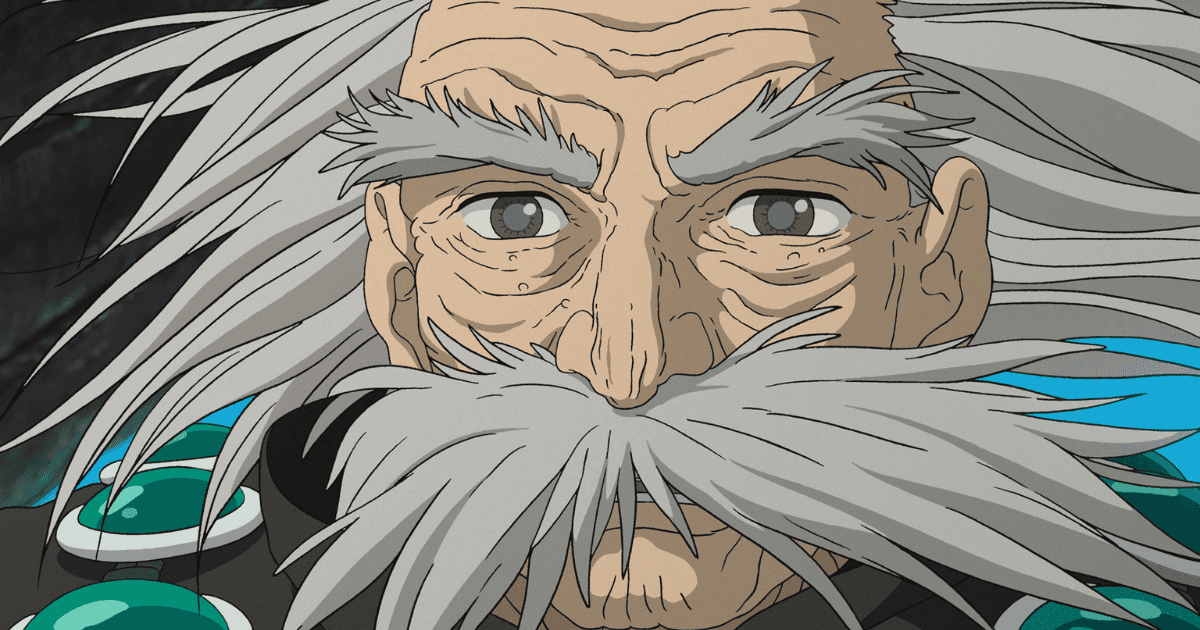
Granduncle’s Profile
The former master of the “Blue Heron Mansion” who vanished inside the mysterious tower. According to Natsuko, he “went crazy from reading too many books.”
However, the vanished granduncle had spent decades diligently creating his own world of imagination. He used the Gray Heron / Heron Man to lure Mahito into the tower, intending to have his blood relative, Mahito, inherit the creation of that world.
In the end, Mahito’s rejection of the world the granduncle created caused that world and the tower to collapse. Yet, the granduncle appeared satisfied.
The Granduncle as Hayao Miyazaki
The fantasy world depicted in The Boy and the Heron is, without a doubt, Hayao Miyazaki’s inner world and world of creation. This would make the Granduncle an avatar for Miyazaki himself.
On the other hand, in the NHK documentary “Professional Work Style: 2399 Days with Ghibli and Hayao Miyazaki,” broadcast on December 16, 2023, Director Miyazaki himself states that “the model for the Granduncle is Isao Takahata.”
However, watching the film, it doesn’t seem that the Granduncle symbolizes only Isao Takahata. Ultimately, I believe that while he intended to depict the Granduncle as Takahata, in the process of creating a “world of creation,” he also projected himself onto the character. Hiromasa Yonebayashi, a former animator at Studio Ghibli and now a film director, also commented:
プロフェッショナル観ました。
— 米林宏昌 (@MaroYonebayashi) December 16, 2023, in Japanese
面白かったです。
僕は大伯父は高畑さんだけじゃなくて宮崎監督自身も入ってるように感じたけどどうなんでしょう?
他のキャラクターも多数の人が混ざっているように思います。
想像するだけなんで答えはないですけど…
I watched “Professional.” It was interesting. I felt that the Granduncle wasn’t just Takahata-san but also included Miyazaki-kantoku himself, but I wonder what others think? I feel that other characters are also a mix of many people. It’s just my imagination, so there’s no right answer…
With that in mind, what is the meaning of the conclusion of The Boy and the Heron?
One way to think about it is that he is rejecting his own outdated self and depicting a “curtain call.” The collapsing tower could be seen as “Studio Ghibli.”
However, if we think this way, the meaning of another of Miyazaki’s avatars, Mahito, bringing a stone from the “Lower World” back to the real world becomes difficult to understand.
It may be a mistake to seek comprehensive consistency in what is depicted in The Boy and the Heron, but I have written at length about the meaning of the story, including the stone that Mahito brought back, in the following article:

The Meaning of the 13 Stones He Tried to Entrust to Mahito and the 8 Stones He Piled Himself
There are many intriguing parts in The Boy and the Heron, but the “13 cold stones” that the Granduncle tried to entrust to Mahito are particularly curious.
Considering various factors, the meaning of those stones can be seen as “Hayao Miyazaki’s works.” However, the number “13” is still bothering.
While it’s possible that there’s no particular meaning, I’m also driven by the urge to find some rationale. I delve into this in the following article:
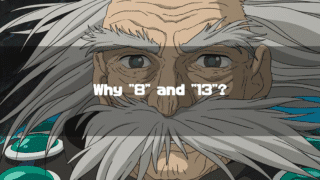
Perhaps we shouldn’t consider the number “13” in isolation, but also together with the number “8,” from the eight crumbling stones that the Granduncle piled himself.
How did you interpret the meaning of these numbers?
Other Characters and Voice Actors
The Seven Old Maids
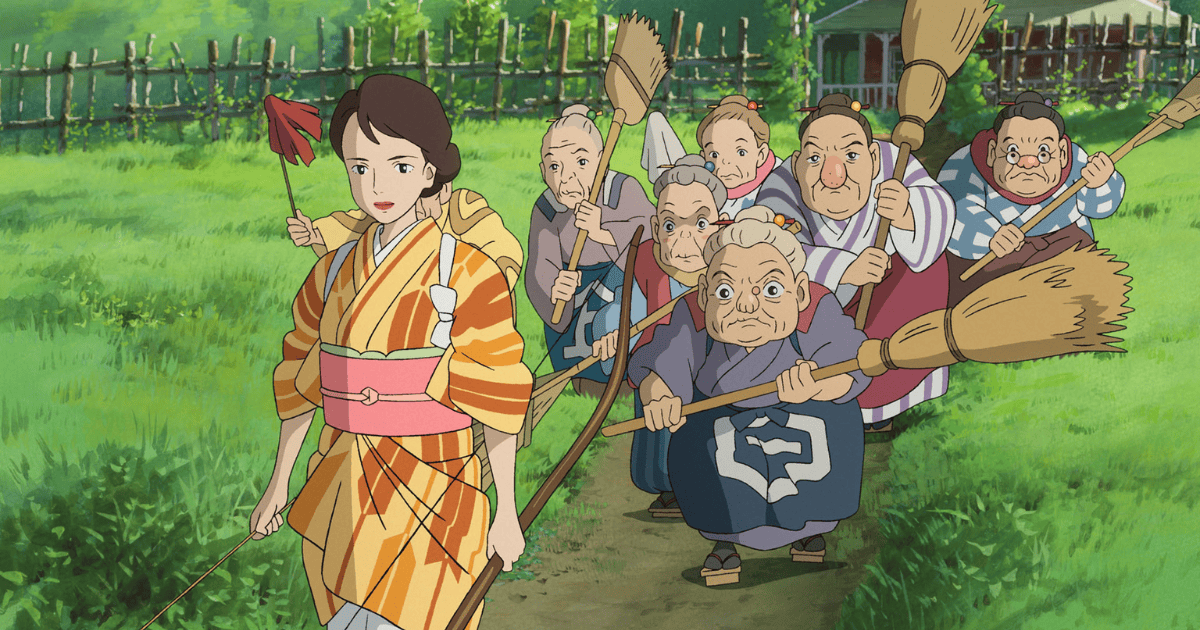
The seven old maids who took care of Mahito at Natsuko’s mansion (the Blue Heron Mansion). Currently, the English voice actors for four of them are known.
- Aiko: Barbara Goodson
- Izumi: Denise Pickering
- Utako: Barbara Rosenblat
- Eriko: Melora Harte
- Kiriko: Florence Pugh
The Boy and the Heron (2023) Original Japanese Voice Cast List
| Character Name | Voice Actor |
|---|---|
| Mahito Maki | Soma Santoki |
| The Gray Heron | Masaki Suda |
| Himi | Aimyon |
| Natsuko | Yoshino Kimura |
| Shoichi Maki | Takuya Kimura |
| Granduncle | Shōhei Hino |
| Kiriko | Ko Shibasaki |
| Noble Pelican | Kaoru Kobayashi |
| The Parakeet King | Jun Kunimura |
| Izumi | Keiko Takeshita |
| Utako | Jun Fubuki |
| Eriko | Sawako Agawa |
| Aiko | Shinobu Otake |
The images used in this article are from “Still Images of Studio Ghibli Works“.
About the Author
Recent Posts
- 2025-10-21
Indiana Jones and the Dial of Destiny(2023): Full Synopsis & Analysis: Indy’s True Motive and the Enigma of Helena - 2025-10-15
Indiana Jones and the Dial of Destiny(2023):Historical Background-WWII, the Real Dr. Schmidt, the Siege of Syracuse, and the Antikythera Mechanism - 2025-10-08
Why Does Children Who Chase Lost Voices Feel So Ghibli-esque? [Makoto Shinkai’s “Tale of Farewell”] - 2025-10-07
5 Centimeters per Second: Characters, Voice Actors, Character Analysis and Character Map - 2025-10-06
5 Centimeters per Second: Full Synopsis, Analysis, Ending Explained & Character Map (Spoilers)

